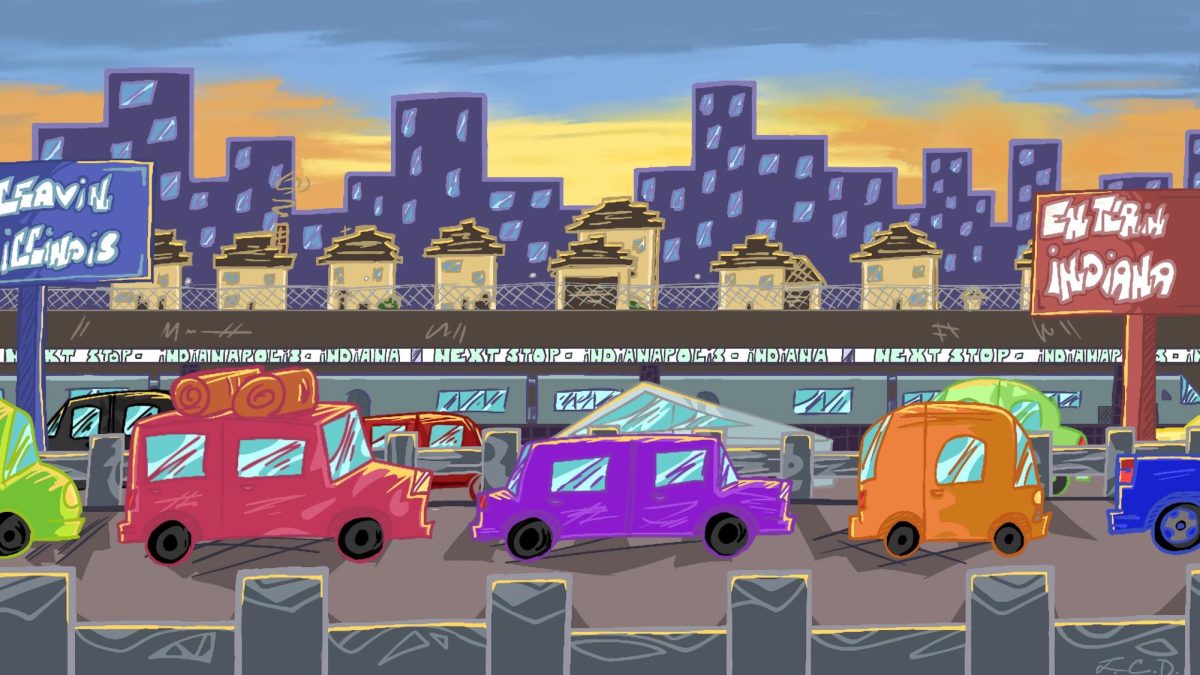In the past couple of months, there has been a certain question posed both in the minds of many people and on the ballots of primary elections. Many of these questions fall along the lines of “Should these Illinois counties secede the state, away from Cook County?” and recently, “Should Illinois and Indiana make changes about the shape of their shared border?” Although it may seem impossible, recent developments have caused both Illinoisans and Hoosiers to believe otherwise.
During the Nov. election last year, the question, taken verbatim from the ballot itself, was proposed to voters, “Shall the board of (the county) correspond with the boards of other counties of Illinois, outside of Cook County, about the possibility of separating from Cook County to form a new state and to seek admission to the Union as such, subject to the approval of the people?”
In addition to the ballot question, the Indiana State Legislature made a proposal: why not have the border between Indiana and Illinois adjusted in order to accommodate for the changes causing people to want to secede?
“We have a lot to offer in the Hoosier state,” said Indiana House Speaker Todd Huston (R-Fishers) in a press release.” Indiana is consistently ranked among the best states for low taxes, business climate, economic opportunity and affordability. Our economy is growing at a faster rate than all of our neighboring states. If Illinois residents and counties are looking for something different, we’re simply raising our hands and saying, ‘you’d be welcome in Indiana.’”
In light of this new development, attention has been brought to the groups pushing for change: New Illinois and the Illinois Separation Referendum.
“There are two state split organizations in the state of Illinois,” Chairman of New Illinois G.H. Merritt says. “One of them is New Illinois, and we have a certain number of various activities. The other one is called the Illinois Separation Referendum. They’re the ones that are located downstate, and their single project is to have an advisory referendum on county ballots.”
New Illinois started because the leaders wanted to fight for their homes. This was caused by a number of factors, from economic and financial instability to sentimental attachment to home.
“Our mission as a nonprofit organization is to educate Illinoisans about their right under the US Constitution,” Merritt says, “to pursue the formation of a new state separate from the state of Illinois.”
“I think what they’re doing is very valuable, because it shows what’s the will of the people coming together to fight a common cause.”
Throughout all the attention on the movement, it is common for groups like these to face misconceptions on their true missions.
“A lot of the media tends to use the word secession, but this is not secession. It’s legally different. What we’re doing is following a constitutional process,” says Merritt. “And even if it wasn’t, I wouldn’t want to use that word because it’s got really bad connotations. This is not the Confederacy. We don’t want to leave the United States.”
Another common belief about this movement is that it is based mainly on the Republican v. Democrat ideology, when it’s really based on the divide between those living in urban v. rural areas and the political overshadowing of one over the other.
“We have more support from the Republican side of the aisle because there’s a higher percentage of people in that party that live in the disenfranchised area but in reality, this has nothing to do with the party.” Merritt says, “It’s an urban versus rural divide,”
If this cause were to come to fruition and a new state or border adjustment would occur, a multitude of new things would happen.
“One thing that comes to mind for me is that funding for a state comes from taxes,” says Kathryn Larson, social science teacher at MCHS. “The taxation in both Illinois and Indiana looks a little bit different. So as a result, they could see differences in Illinois for public works projects and things along those lines.”
In addition to economic and social changes that would occur, one large political aspect would be changed: the number of electoral college votes for both states.
“This change would theoretically give more electoral college representation to Indiana and less Electoral College representation to Illinois, which, in turn,” says Larson, “could affect which states presidential candidates are visiting come time for elections and things like that.”
Even if the majority of areas in Illinois were able to fulfill their wishes, some would still be left behind.
“For the Republican areas that are still left over in Illinois,” says Larson, “it could potentially make them poor, feel more alienated, and create even a stronger democratic leaning in Illinois.”
In light of the progress this movement is making, it may cause Illinoisans to beg the question, “How is this even possible?” or “What’s next after this big step?” Hopefully, now that all of this new information has landed on the screens of those interested, these big questions can be answered.




